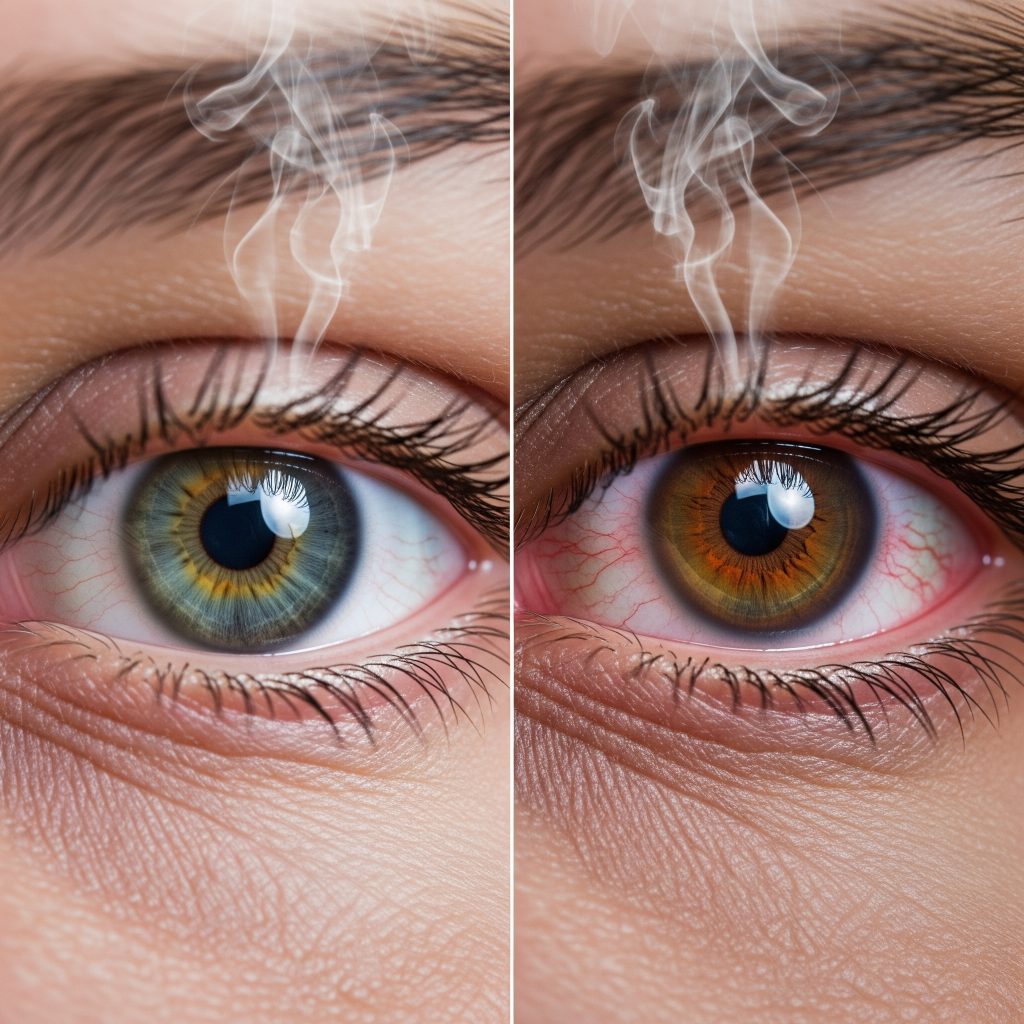
How Smoking Harms Your Eyes
Smoking damages multiple critical parts of the eye including the retina, lens, and macula, leading to cloudy vision, reduced field of view, or even permanent vision loss. It increases risk for serious eye diseases such as cataracts and age related macular degeneration due to toxic compounds in smoke that harm delicate eye tissues and blood flow.
Cataracts and Macular Degeneration: Dual Threats
Smokers face a significantly elevated risk of developing cataracts, which are cloudy areas in the lens that blur vision. Studies suggest that smokers are two to three times more likely to develop cataracts compared to nonsmokers. Smoking also dramatically increases the risk of macular degeneration, which damages the part of the retina responsible for sharp, central vision. Smokers are up to four times more likely to develop this condition, and it often appears earlier in life.
Other Vision Risks: Dry Eye, Retinopathy, Uveitis, and Optic Nerve Damage
Smoke chemicals irritate the eye’s surface, reducing tear production or breaking down the tear film, leading to redness, discomfort, and blurry vision. Among people with diabetes, smoking worsens damage to retinal blood vessels, speeding vision loss from diabetic retinopathy. It can also constrict blood flow and raise eye pressure, contributing to optic nerve damage and glaucoma. In addition, smoking can trigger uveitis, an inflammation inside the eye that causes pain, redness, blurred vision, and can lead to vision loss if untreated.
Secondhand Smoke, Pregnancy, and Children
Secondhand smoke also poses risks for eye health. Individuals regularly exposed are more likely to develop macular degeneration. Smoking during pregnancy increases the risk of serious eye conditions in newborns, such as retinopathy of prematurity and other infections. Children of smokers are also more prone to eye irritation and inflammatory conditions such as conjunctivitis.
Visual Symptoms to Watch For
Many smoking related eye diseases begin without noticeable symptoms, which makes regular eye exams critical for early detection. Warning signs may include cloudy or blurry vision, faded or yellow tinted colors, needing more light when reading, wavy or distorted central vision, and persistent dry, scratchy, or red eyes. These symptoms can signal cataracts, macular degeneration, dry eye, or optic nerve issues, and should never be ignored.
Quit for Vision, Quit for Health
Quitting smoking is the single most effective step to protect eyesight. Stopping smoking can significantly reduce risk and slow progression of serious eye diseases, while even lowering risk for those exposed to secondhand smoke. Pairing smoking cessation with healthy lifestyle choices such as a balanced diet rich in antioxidants, along with regular eye exams, is one of the most powerful ways to safeguard long term vision. It is never too late to make a positive change for both your eyes and your overall health.